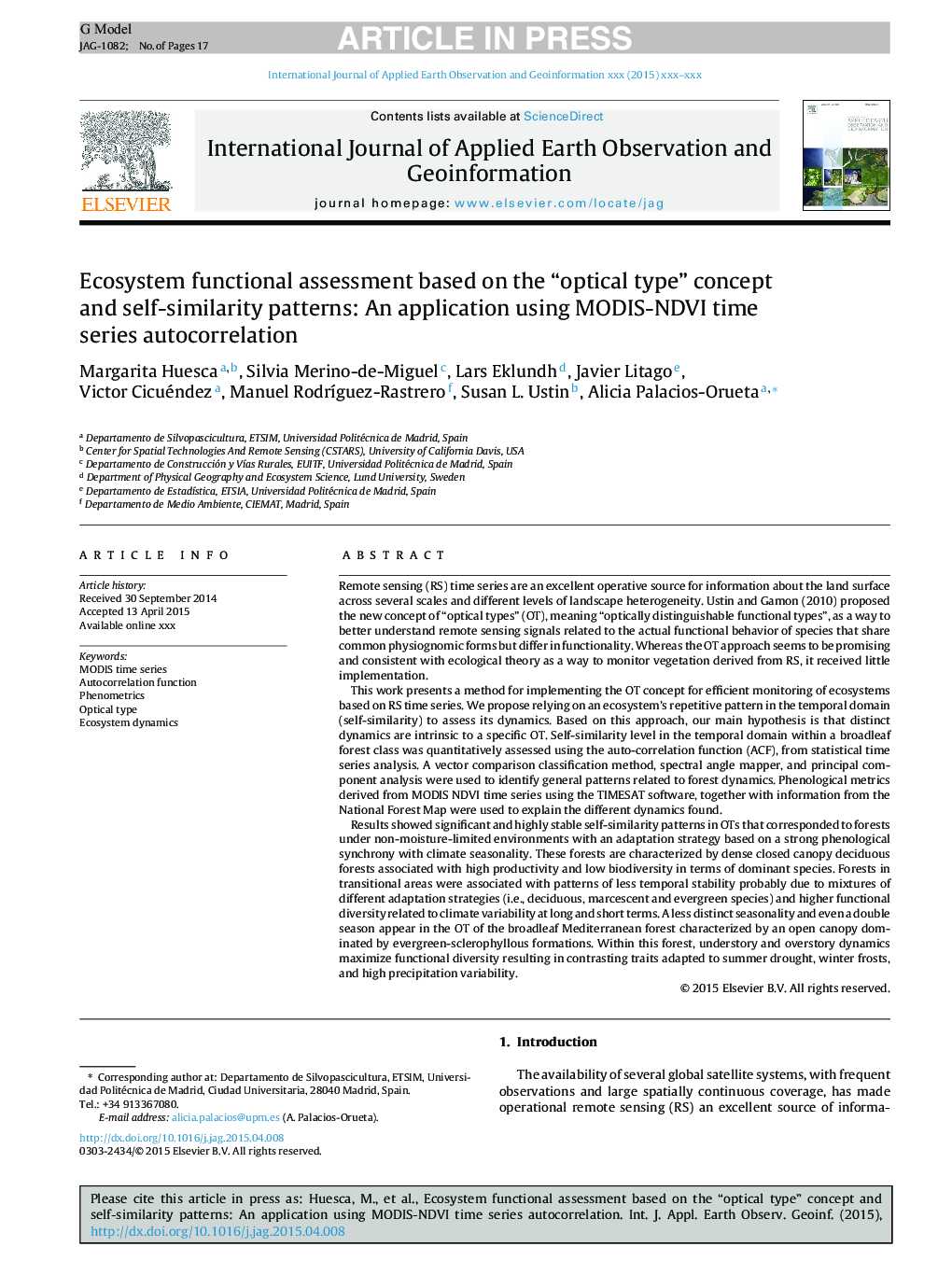| Article ID | Journal | Published Year | Pages | File Type |
|---|---|---|---|---|
| 6348583 | International Journal of Applied Earth Observation and Geoinformation | 2015 | 17 Pages |
Abstract
Results showed significant and highly stable self-similarity patterns in OTs that corresponded to forests under non-moisture-limited environments with an adaptation strategy based on a strong phenological synchrony with climate seasonality. These forests are characterized by dense closed canopy deciduous forests associated with high productivity and low biodiversity in terms of dominant species. Forests in transitional areas were associated with patterns of less temporal stability probably due to mixtures of different adaptation strategies (i.e., deciduous, marcescent and evergreen species) and higher functional diversity related to climate variability at long and short terms. A less distinct seasonality and even a double season appear in the OT of the broadleaf Mediterranean forest characterized by an open canopy dominated by evergreen-sclerophyllous formations. Within this forest, understory and overstory dynamics maximize functional diversity resulting in contrasting traits adapted to summer drought, winter frosts, and high precipitation variability.
Related Topics
Physical Sciences and Engineering
Earth and Planetary Sciences
Computers in Earth Sciences
Authors
Margarita Huesca, Silvia Merino-de-Miguel, Lars Eklundh, Javier Litago, Victor Cicuéndez, Manuel RodrÃguez-Rastrero, Susan L. Ustin, Alicia Palacios-Orueta,
